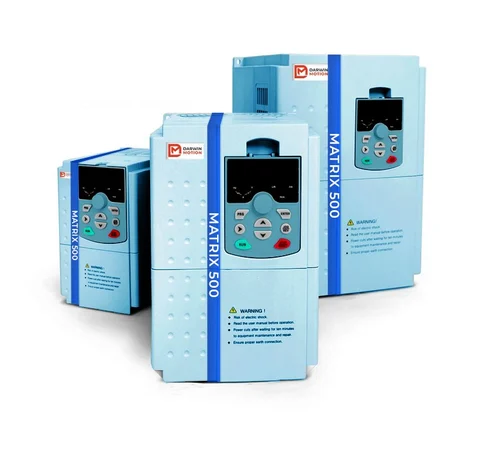Posted on 13th Feb 2024

In today's world, energy efficiency and sustainability have become paramount concerns across various industries. As the demand for energy continues to rise, finding innovative solutions to reduce energy consumption and minimize carbon emissions has become imperative. One such solution gaining prominence is the implementation of Variable Frequency Drives (VFDs). These devices offer a versatile and effective means to optimize energy usage while simultaneously reducing carbon footprints. In this article, we delve into the significance of VFDs in enhancing energy efficiency and minimizing environmental impact.
Variable Frequency Drives, also known as adjustable frequency drives or inverters, are electrical devices used to control the speed and torque of alternating current (AC) induction motors. Unlike traditional fixed-speed motors that operate at a constant speed, VFDs enable precise regulation of motor speed by varying the frequency and voltage of the electrical supply. This capability allows motors to operate at different speeds based on load requirements, thereby optimizing energy usage and reducing wastage.
One of the primary benefits of VFDs is their ability to significantly improve energy efficiency across various applications. By controlling motor speed to match the actual demand, VFDs eliminate the energy losses associated with throttling or mechanical methods of flow control. This means that motors consume only the necessary amount of energy required to meet the desired output, resulting in substantial energy savings.
In industrial settings, where motor-driven equipment accounts for a significant portion of energy consumption, the implementation of variable frequency drive hvac can lead to substantial efficiency gains. For instance, in HVAC systems, pumps, and fans, VFDs enable precise control of airflow and water flow rates, allowing these systems to operate at optimal levels under varying load conditions. Similarly, in conveyor belts, compressors, and other manufacturing equipment, VFDs ensure that motors run at the most efficient speeds, reducing energy wastage and operational costs.
The environmental benefits of VFDs extend beyond energy efficiency, encompassing the reduction of carbon footprints. By minimizing energy consumption and optimizing motor performance, VFDs help organizations lower their greenhouse gas emissions and mitigate their environmental impact. This is particularly crucial in sectors with high energy intensity, such as manufacturing, mining, and transportation.
In the transportation sector, VFDs play a pivotal role in reducing carbon emissions associated with electric vehicles (EVs) and hybrid vehicles. By efficiently controlling the speed of traction motors and auxiliary systems, VFDs maximize the driving range of EVs while minimizing energy losses during acceleration and deceleration. This not only enhances the overall efficiency of electric propulsion systems but also contributes to cleaner and greener transportation solutions.
Moreover, VFDs facilitate the integration of renewable energy sources, such as solar and wind power, into electrical grids by enabling seamless grid stabilization and voltage control. By dynamically adjusting motor speeds in response to fluctuating renewable energy generation, VFDs help balance supply and demand, thereby supporting the transition towards a low-carbon energy future.
Several real-world examples demonstrate the tangible benefits of incorporating VFDs into industrial processes and systems. For instance, a manufacturing plant in the automotive industry implemented VFDs in its production lines, resulting in a 20% reduction in energy consumption and a significant decrease in carbon emissions. Similarly, a wastewater treatment facility upgraded its pumps and blowers with VFDs, leading to substantial energy savings and environmental improvements.
In conclusion, Darwin Motion Variable Frequency Drives (VFDs) offer a compelling solution for enhancing energy efficiency and reducing carbon footprints across diverse applications. By enabling precise control of motor speed and torque, VFDs optimize energy usage, minimize wastage, and contribute to sustainability efforts. As industries and organizations strive to meet stringent energy efficiency targets and combat climate change, the adoption of VFDs emerges as a crucial strategy for achieving these objectives. By embracing ac drive technology, businesses can not only drive cost savings and operational efficiency but also demonstrate their commitment to environmental stewardship and corporate social responsibility.